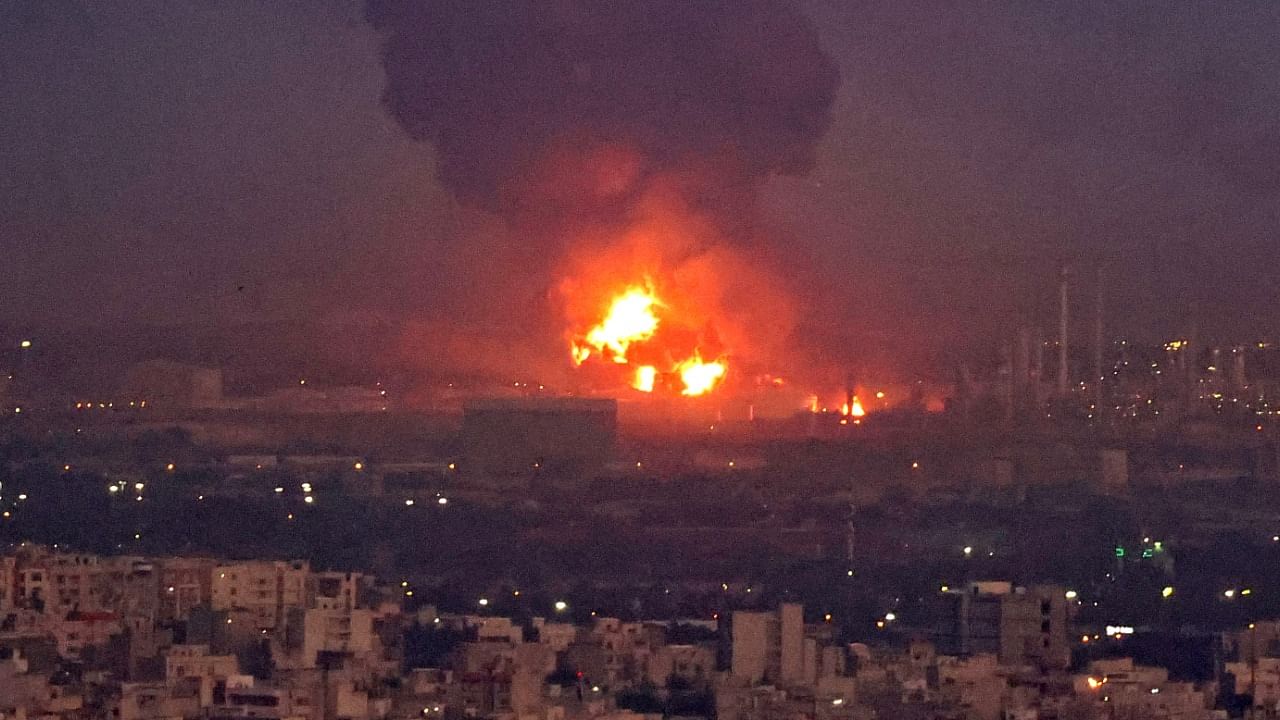
Mysterious fires sank Iran’s largest warship and burned a big Tehran oil refinery on Wednesday — seemingly unconnected blazes that nonetheless raised suspicions the country had once again been targeted by Israeli saboteurs.
The fires broke out hours apart as Iran was reporting progress in talks aimed at resurrecting the international nuclear agreement scrapped three years ago by the Trump administration, which the Biden administration wants to restore. Israel, which regards Iran as a dangerous adversary, opposes such an accord, contending it will not stop Iran from weaponizing nuclear fuel.
Iran has urgently sought to revive the accord, which would alleviate onerous economic sanctions imposed by the United States in exchange for guarantees that Iranian nuclear work remains peaceful. Iran has sought to play down recent episodes of apparent sabotage, including an explosion that wrecked part of its Natanz uranium enrichment complex less than two months ago.
Israel has tacitly acknowledged responsibility for the Natanz explosion and attacks on other Iranian nuclear facilities, as well as the brazen killing of a top nuclear scientist. It neither confirmed nor denied any role in the fires.
The blaze on the warship, the Kharg, broke out as the vessel was deployed in a Gulf of Oman training exercise. The Tasnim news agency described the Kharg as a “training and logistical ship” that had been in service for more than 40 years. The exact cause of the fire was unclear.
Military and civilian crews battled the fire for 20 hours before the ship sank off the coast of the southern port of Jask, Tasnim reported. The crew members managed to evacuate after the fire broke out and were transferred to shore, the report said, suggesting that there were no casualties.
The Kharg, also spelt Khark in English, serves as a naval replenishment ship and is Iran’s largest vessel by weight, according to an analysis of Iran’s navy.
Later Wednesday, a massive fire broke out at a large state-owned petrochemical refinery in south Tehran. Billowing plumes of smoke and flames could be seen from all corners of the capital more than 12 miles away.
The head of Tehran’s emergency response committee, Mansour Darajati, said a leak in one of the pipelines carrying liquid gas had caught fire and caused an explosion, according to state media.
Iranian media accounts said at least 18 storage tankers were in flames and quoted Tehran’s mayor as saying more than 100 firetrucks had been deployed from every Tehran firehouse to battle the inferno. Photos from Tehran also showed long lines of motorists at gasoline stations, reflecting fear of fuel shortages.
Although official Iranian media did not ascribe blame, the historical pattern was not lost on many Iranians, given the history of covert Israeli operations on Iranian targets. Just hours after the ship fire, the refinery blaze erupted.
“We can’t assess definitely what has happened — it could be from structural damage or sabotage,” said Saeed Shariati, a political analyst in Tehran. “With our sensitivity there is always the possibility of an attack.”
In April, an Iranian military vessel stationed in the Red Sea was damaged by an apparent Israeli mine attack, the first time Israeli-Iranian skirmishes at sea had affected an Iranian ship used for military purposes.
Political analysts outside Iran viewed the Kharg fire as more than a coincidence, even though some Iranian naval calamities have been accidental.
“Obviously, the thing we’re all looking for is if the Israelis are involved,” said Sanam Vakil, deputy director of the Middle East and North Africa Program at Chatham House, a research organization in Britain. “The Israeli security establishment is using this period to define some new red lines vis-à-vis Iran and really demonstrate their capacity.”
Israel, she added, has been sending a message to the United States and the region that it is “willing to act independently in order to protect its security interests.”
The Iranian port of Jask sits on the Gulf of Oman near the Strait of Hormuz, a vital shipping lane that leads to the Persian Gulf. It is an area where the fraught relations between Iran, the United States and its allies have played out. Beginning in 2019, ships in the Gulf of Oman suffered a series of maritime guerrilla attacks, crippling commercial oil tankers and spooking worldwide oil markets.
The United States said that the attacks were a tacit threat by Tehran to block the shipping artery and accused it of having targeted the ships with limpet mines, even releasing a video that showed members of Iran’s Revolutionary Guard removing an unexploded mine from a vessel. Iran denied attacking the ships.
Yet Iran also has a history of naval disasters that are apparently unrelated to external enemies. During a military training exercise last year, a missile from an Iranian frigate mistakenly struck another ship near the same port, Jask, killing at least 19 sailors and wounding 15.
It may not be easy to distinguish clumsiness from obfuscation. Iran played down Israeli involvement in recent attacks in an effort to lower tensions and avoid acknowledging Israel’s successes, blaming instead internal sabotage.
“It’s bad if it’s their own fault, and it’s bad if the Israelis are behind it,” Vakil said. “It’s embarrassing either way. So the question is: How are they going to spin this?”